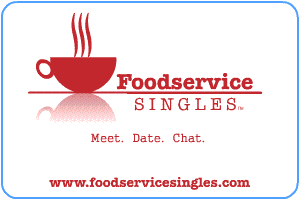
A Server's Perspective:
Refresher Course
By Jorge Eduardo Castillo
I don't know where you live, but here in Maryland during this time of year it can get pretty hot. And not the comfortable dry heat with a nice breeze- we're talking high 90s with enough humidity to make you sweat all day.
I figured this column would be a good place to talk about the wine I enjoy most on a really, really, really hot day: Sauvignon Blanc. I'll take a glass of nicely chilled, slightly acidic Sauvignon Blanc over lemonade or iced tea any day of the week. So let's talk about selling, recommending and serving Sauvignon Blanc since all are not built the same.
Sauvignon Blanc is widely grown around the world, originating in the Loire Valley in France and later moving to the U.S., Australia, New Zealand, South Africa, and South America. When a guest asks you to recommend a nice Sauvignon Blanc for their dinner, it is not necessarily safe to pick one at random from your list, because they can be very different from one region/country to the next. Let's explore the styles:
The Old World style tends to be high in acid (especially those from the village of Sancerre), which can be a turnoff for many wine drinkers. Before recommending one of these acid bombs, make sure that 1) your guest doesn't mind wine on the tart side, and 2) the food on the table can hold up to a wine with high acid. I like to recommend a rich fish preparation, such as salmon with beurre blanc, since the acid in the wine and the fat in the dish tend to cancel each other out.
I always suggest that diners proceed with caution when it comes to American Sauvignon Blanc. Without getting producer-specific, many of the big commercial wineries here tend to think of Sauvignon Blanc as an afterthought because their "bread and butter" comes from Merlot, Cabernet and Chardonnay. Many bottlings are introduced to way too much oak, which can overpower the subtle citrus and tropical fruit flavors that make Sauvignon Blanc so enjoyable. My personal suggestion is that you get to know the producers and bottlings on your list intimately because picking an American Sauvignon Blanc at random could be a big mistake. That is not to say there aren't some very good American bottlings out there because there are, you just need to know which ones they are. (Beware of Fume Blancs from California. They are, in many cases, made from the Sauvignon Blanc grape, but are trying to piggyback off of the Pouilly Fume from France. These wines are typically over-produced and under performing.)
Let's talk about my favorite Sauvignon Blanc producing region - New Zealand. Good drainage and a cool climate help to produce the some of the most concentrated and balanced Sauvignon Blanc in the world. What I really love about these wines is that many of them have a unique grapefruit characteristic that appeals to a wide variety of wine drinkers. Since these wines are so well-balanced and tend to dance on your palate, they can be used with many food preparations that typically match well with white wine. Contrary to American Sauvignon Blancs, you can pick a New Zealand bottle at random and it will most likely be enjoyable. There are a few bad apples, but overall you are not going to go wrong when siding with the Kiwis.
Australia, South Africa and South America (Chile in particular) have all been coming on strong as of late with their Sauvignon Blanc production. The South African Mulderbosch winery, with its funky green bottle and New Zealand-like characteristics, has become very popular in the States. There are some good bottlings from these regions to choose from, but make sure you have tasted what you will be recommending because it can be a crapshoot.
Another thing that should be mentioned is that, similar to Champagne, many people make the mistake of serving Sauvignon Blanc way too cold. 45F to 50F is where you want to be, so please do not submerge the bottle in salted ice water for two hours before serving. Sauvignon Blanc, served too chilled, becomes shrill and the acidity becomes the dominating component.
Stay cool! Cheers!
June 2008
Jorge Eduardo Castillo is a representative of Vino 101, which provides on-line server wine training. Visit www.vino101.com for more details.




